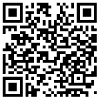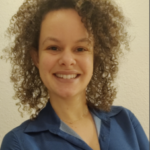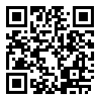
Lehrgebiet: Theoretische Informatik und künstliche Intelligenz
Büro: 01.214
Labor: 04.105
Telefon: +49 208 88254-806
E-Mail:
🛜 http://lab.iossifidis.net

Ioannis Iossifidis studierte Physik (Schwerpunkt: theoretische Teilchenphysik) an der Universität Dortmund und promovierte 2006 an der Fakultät für Physik und Astronomie der Ruhr-Universität Bochum.
Am Institut für Neuroinformatik leitete Prof. Dr. Iossifidis die Arbeitsgruppe Autonome Robotik und nahm mit seiner Forschungsgruppe erfolgreich an zahlreichen, vom BmBF und der EU, geförderten Forschungsprojekten aus dem Bereich der künstlichen Intelligenz teil. Seit dem 1. Oktober 2010 arbeitet er an der HRW am Institut Informatik und hält den Lehrstuhl für Theoretische Informatik – Künstliche Intelligenz.
Prof. Dr. Ioannis Iossifidis entwickelt seit über 20 Jahren biologisch inspirierte anthropomorphe, autonome Robotersysteme, die zugleich Teil und Ergebnis seiner Forschung im Bereich der rechnergestützten Neurowissenschaften sind. In diesem Rahmen entwickelte er Modelle zur Informationsverarbeitung im menschlichen Gehirn und wendete diese auf technische Systeme an.
Ausgewiesene Schwerpunkte seiner wissenschaftlichen Arbeit der letzten Jahre sind die Modellierung menschlicher Armbewegungen, der Entwurf von sogenannten «Simulierten Realitäten» zur Simulation und Evaluation der Interaktionen zwischen Mensch, Maschine und Umwelt sowie die Entwicklung von kortikalen exoprothetischen Komponenten. Entwicklung der Theorie und Anwendung von Algorithmen des maschinellen Lernens auf Basis tiefer neuronaler Architekturen bilden das Querschnittsthema seiner Forschung.
Ioannis Iossifidis’ Forschung wurde u.a. mit Fördermitteln im Rahmen großer Förderprojekte des BmBF (NEUROS, MORPHA, LOKI, DESIRE, Bernstein Fokus: Neuronale Grundlagen des Lernens etc.), der DFG («Motor‐parietal cortical neuroprosthesis with somatosensory feedback for restoring hand and arm functions in tetraplegic patients») und der EU (Neural Dynamics – EU (STREP), EUCogII, EUCogIII ) honoriert und gehört zu den Gewinnern der Leitmarktwettbewerbe Gesundheit.NRW und IKT.NRW 2019.
ARBEITS- UND FORSCHUNGSSCHWERPUNKTE
- Computational Neuroscience
- Brain Computer Interfaces
- Entwicklung kortikaler exoprothetischer Komponenten
- Theorie neuronaler Netze
- Modellierung menschlicher Armbewegungen
- Simulierte Realität
WISSENSCHAFTLICHE EINRICHTUNGEN
- Labor mit Verlinkung
- ???
- ???
LEHRVERANSTALTUNGEN
- ???
- ???
- ???
PROJEKTE
- Projekt mit Verlinkung
- ???
- ???
WISSENSCHAFTLICHE MITARBEITER*INNEN

Felix Grün
Büro: 02.216 (Campus Bottrop)

Marie Schmidt
Büro: 02.216 (Campus Bottrop)

Aline Xavier Fidencio
Gastwissenschaftlerin

Muhammad Ayaz Hussain
Doktorand

Tim Sziburis
Doktorand

Farhad Rahmat
studentische Hilfskraft
GOOGLE SCHOLAR PROFIL

Sonstige
Iossifidis, Ioannis; Klaes, Christian
Low dimensional representation of human arm movement for efficient neuroprosthetic control by individuals with tetraplegia Sonstige
2017.
Abstract | BibTeX | Schlagwörter: Autonomous robotics, BCI, Dynamical systems, movement model, neuroprosthetic
@misc{Iossifidis2017b,
title = {Low dimensional representation of human arm movement for efficient neuroprosthetic control by individuals with tetraplegia},
author = {Ioannis Iossifidis and Christian Klaes},
year = {2017},
date = {2017-01-01},
urldate = {2017-01-01},
publisher = {SfN 2017},
abstract = {Over the last decades the generation mechanism and the representation of goal- directed movements has been a topic of intensive neurophysiological research. The investigation in the motor, premotor, and parietal areas led to the discovery that the direction of hand's movement in space was encoded by populations of neurons in these areas together with many other movement parameters. These distributions of population activation reflect how movements are prepared ahead of movement initiation, as revealed by activity induced by cues that precede the imperative signal (Georgopoulos, 1991). Inspired by those findings a model based on dynamical systems was proposed both, to model goal directed trajectories in humans and to generate trajectories for redundant anthropomorphic robotic arms. The analysis of the attractor dynamics based on the qualitative comparison with measurements of resulting trajectories taken from arm movement experiments with humans (Grimme u. a., 2012) created a framework able to reproduce and to generate naturalistic human like arm trajectories (Iossifidis und Rano, 2013; Iossifidis, Schöner u. a., 2006). The main idea of the methodology is to choose low-dimensional, behavioral va- riables of the goal task can be represented as attractor states of those variables. The movement is generated through a dynamical system with attractors and repellers on the behavioral space, at the goal and constraint positions respectively. When the motion of the robot evolves according to the dynamics of these systems, the behavioral variables will be stabilized at their attractors. Movement is represented by the polar coordinates $phi$,$theta$ of the movement direction (heading direction) and the angular frequency $ømega$ of a hopf oscillator, generating the velocity profile of the arm movement. Therefore, the system dynamics will be expressed in terms of these variables. The target and each obstacle induce vector fields over these variables in a way that states where the hand is moving closer to the target are attractive, while states where it is moving towards an obstacle are repellant. Contributions from different sources are weighted by different factors, e.g. in the vicinity of an obstacle, the contribution from that obstacle must dominate the behavior to guarantee constraint satisfaction (collision prevention). Based on three parameters the presented framework is able to generate temporal stabilized (timed) discrete movements, dealing with disturbances and maintaining an approximately constant movement time. In the current study we will implant two 96-channel intracortical microelectrode arrays in the primary motor and the posterior parietal cortex (PPC) of an individual with tetraplegia. In the training phase the parameters of the dynamical systems will be tuned and optimized by machine learning algorithms. Rather controlling directly the arm movement and adjusting continuously parameters, the patient adjust by his or hers thoughts the three parameters of the dynamics, which remain almost constant during the movement. Only when the motion plan is changing the parameters have to be readjusted. The target directed trajectory evolves from the attractor solution of the dynamical systems equations, which means that the trajectory is generated while the system is in a stable stationary state, a fixed-point attractor. The increase of the degree of assistance lowers the cognitive load of the patient and enables the acknowledgement of the desired task without frustration. In addition we aim to replace the robotic manipulator by an exoskeleton for the upper body which will enable the patients to move his or hers own limbs, which would complete the development of a real neuroprosthetic device for every day use.},
keywords = {Autonomous robotics, BCI, Dynamical systems, movement model, neuroprosthetic},
pubstate = {published},
tppubtype = {misc}
}
Iossifidis, Ioannis; Hussain, Muhammad Ayaz; Klaes, Christian
Temporal stabilized arm movement for efficient neuroprosthetic control by individuals with tetraplegia Sonstige
2017.
Abstract | BibTeX | Schlagwörter: Autonomous robotics, Dynamical systems, movement model, neuroprosthetic
@misc{Iossifidis2017a,
title = {Temporal stabilized arm movement for efficient neuroprosthetic control by individuals with tetraplegia},
author = {Ioannis Iossifidis and Muhammad Ayaz Hussain and Christian Klaes},
year = {2017},
date = {2017-01-01},
urldate = {2017-01-01},
publisher = {SfN 2017},
abstract = {The generation of discrete movement with distinct and stable time courses characterizes each human movement and reflect the need to perform catching and interception tasks and for timed action sequences, incorporating dynamically changing environmental constraints. Several lines of evidence suggest neuronal mechanism for the initiation of movements i.e. in the supplementary motor area (SMA) and the premotor cortex and for movement planning mechanism generating velocity profiles satisfying time constraints. In order to meet the requirements of on-line evolving trajectories we propose a model, based on dynamical systems which describes goal directed trajectories in humans and generates trajectories for redundant anthropomorphic robotic arms The current study aim to evaluate the temporal characteristics of primary motor and posterior parietal cortex in patients with tetraplegia by using inception task implemented in virtual reality. The participants will be implanted with two 96-channel intracortical microelectrode arrays in the Primary Motor and Post Parietal Cortex. In the training phase the participants will be confronted with the observation of a robotic arm intercepting the bob of a pendulum at the lowest point of it's trajectory (maximum velocity) - the end effector reaches at the same time as the bob of the pendulum the lowest point of the trajectory performing a perfectly timed movement. The arm is positioned perpendicular to the oscillation plane exactly at the hight of the interception point to generate a one dimensional trajectory to the target. The time to contact between the robot's end effector and the bob of the pendulum is maintained constant and during the different sessions the distance between end effector and the point of interception is gradually increased. In order to catch up and to reach in time, either velocity formation or initiation time of the movement have to be changed. Both effects will be investigated independently. For the decoding of movement-related information we introduce a framework exploiting a deep learning approach with a convolutional neural networks.},
keywords = {Autonomous robotics, Dynamical systems, movement model, neuroprosthetic},
pubstate = {published},
tppubtype = {misc}
}
Iossifidis, Ioannis
Video Demonstration: Interactive grasping Sonstige
http://www.ini.rub.de /thbio/group/robotic/video4.rm, 2002.
Links | BibTeX | Schlagwörter: interactive grasping, Machine Learning
@misc{Iossifidis2002bbb,
title = {Video Demonstration: Interactive grasping},
author = {Ioannis Iossifidis},
url = {http://www.ini.rub.de/thbio/group/robotic/video4.rm},
year = {2002},
date = {2002-01-01},
howpublished = {http://www.ini.rub.de /thbio/group/robotic/video4.rm},
keywords = {interactive grasping, Machine Learning},
pubstate = {published},
tppubtype = {misc}
}
Iossifidis, Ioannis
Video Demonstration: Interactive grasping Sonstige
http://www.ini.rub.de /thbio/group/robotic/video4.rm, 2002.
Links | BibTeX | Schlagwörter: interactive grasping, Machine Learning
@misc{Iossifidis2002bbc,
title = {Video Demonstration: Interactive grasping},
author = {Ioannis Iossifidis},
url = {http://www.ini.rub.de/thbio/group/robotic/video4.rm},
year = {2002},
date = {2002-01-01},
howpublished = {http://www.ini.rub.de /thbio/group/robotic/video4.rm},
keywords = {interactive grasping, Machine Learning},
pubstate = {published},
tppubtype = {misc}
}
Iossifidis, Ioannis
Video Demonstration: Interactive grasping Sonstige
http://www.ini.rub.de /thbio/group/robotic/video4.rm, 2002.
Links | BibTeX | Schlagwörter: interactive grasping
@misc{Iossifidis2002bbd,
title = {Video Demonstration: Interactive grasping},
author = {Ioannis Iossifidis},
url = {http://www.ini.rub.de/thbio/group/robotic/video4.rm},
year = {2002},
date = {2002-01-01},
howpublished = {http://www.ini.rub.de /thbio/group/robotic/video4.rm},
keywords = {interactive grasping},
pubstate = {published},
tppubtype = {misc}
}
Promotionsarbeiten
Iossifidis, Ioannis
Dynamische Systeme zur Steuerung anthropomorpher Roboterarme in autonomen Robotersystemen Promotionsarbeit
Faculty for Physics and Astronomy, Ruhr-University Bochum, 2006.
Abstract | Links | BibTeX | Schlagwörter: Autonomous robotics, Dynamical systems, inverse kinematics
@phdthesis{Iossifidis2006c,
title = {Dynamische Systeme zur Steuerung anthropomorpher Roboterarme in autonomen Robotersystemen},
author = {Ioannis Iossifidis},
url = {http://www.logos-verlag.de/cgi-bin/engbuchmid?isbn=1305&lng=deu&id=},
year = {2006},
date = {2006-01-01},
urldate = {2006-01-01},
number = {ISBN: 3-8325-1305-1},
pages = {160},
publisher = {Logos Verlag Berlin},
address = {Bochum, Germany},
school = {Faculty for Physics and Astronomy, Ruhr-University Bochum},
abstract = {Das übergeordnete Forschungsgebiet, in das sich die vorliegende Arbeit einbettet, befasst sich mit der Erforschung von informationsverabeitenden Prozessen im Gehirn und der Anwendung der resultierenden Erkenntnisse auf technische Systeme. In Analogie zu biologischen Systemen, deren Beschaffenheit aus den Anforderungen der Umwelt an ihr Verhalten resultiert, leitet sich die Anthropomorphie als Entwurfsprinzip für die Struktur des mit den Menschen interagierenden robotischen Assistenzsystemen ab. Der Autor behandelt in der vorliegende Arbeit das Problem der Erzeugung von Motorverhalten im dreidimensionalen Raum am Beispiel eines anthropomorphen Roboterarmes in einem anthropomorphen robotischen Assistenzsystem. Entwickelt wurde hierbei ein allgemeiner Ansatz, der die Konzepte der Erzeugung von Motorverhalten im 3D-Raum, der Voraussimulation dynamischer Systeme zur Systemdiagnose und zur Suche gewünschter Systemzustände, sowie ein Konzept der Organisation von Verhalten enthält und vereinigt. Nichtlineare dynamische Systeme bilden das mathematische Fundament, die einheitlich, formale Sprache des Ansatzes, mit der sowohl das Motorverhalten des Roboters als auch dessen zeitkontinuierliche Teilsysteme rückgekoppelt werden.},
keywords = {Autonomous robotics, Dynamical systems, inverse kinematics},
pubstate = {published},
tppubtype = {phdthesis}
}
Iossifidis, Ioannis
Visuelle Navigation auf einem autonomen mobilen Roboter Promotionsarbeit
Fakultät für Physik, Technische Universität Dortmund, 1999.
BibTeX | Schlagwörter: Machine Learning
@phdthesis{Iossifidis1999,
title = {Visuelle Navigation auf einem autonomen mobilen Roboter},
author = {Ioannis Iossifidis},
year = {1999},
date = {1999-01-01},
school = {Fakultät für Physik, Technische Universität Dortmund},
keywords = {Machine Learning},
pubstate = {published},
tppubtype = {phdthesis}
}
Iossifidis, Ioannis
Visuelle Navigation auf einem autonomen mobilen Roboter Promotionsarbeit
Fakultät für Physik, Technische Universität Dortmund, 1999.
BibTeX | Schlagwörter: Autonomous robotics, Machine Learning, place cells, robot navigation
@phdthesis{Iossifidis1999b,
title = {Visuelle Navigation auf einem autonomen mobilen Roboter},
author = {Ioannis Iossifidis},
year = {1999},
date = {1999-01-01},
school = {Fakultät für Physik, Technische Universität Dortmund},
keywords = {Autonomous robotics, Machine Learning, place cells, robot navigation},
pubstate = {published},
tppubtype = {phdthesis}
}
Iossifidis, Ioannis
Visuelle Navigation auf einem autonomen mobilen Roboter Promotionsarbeit
Fakultät für Physik, Technische Universität Dortmund, 1999.
BibTeX | Schlagwörter: Autonomous robotics, Machine Learning, place cells, robot navigation
@phdthesis{Iossifidis1999c,
title = {Visuelle Navigation auf einem autonomen mobilen Roboter},
author = {Ioannis Iossifidis},
year = {1999},
date = {1999-01-01},
school = {Fakultät für Physik, Technische Universität Dortmund},
keywords = {Autonomous robotics, Machine Learning, place cells, robot navigation},
pubstate = {published},
tppubtype = {phdthesis}
}
Iossifidis, Ioannis
Visuelle Navigation auf einem autonomen mobilen Roboter Promotionsarbeit
Fakultät für Physik, Technische Universität Dortmund, 1999.
BibTeX | Schlagwörter: Autonomous robotics, place cells, robot navigation
@phdthesis{Iossifidis1999d,
title = {Visuelle Navigation auf einem autonomen mobilen Roboter},
author = {Ioannis Iossifidis},
year = {1999},
date = {1999-01-01},
school = {Fakultät für Physik, Technische Universität Dortmund},
keywords = {Autonomous robotics, place cells, robot navigation},
pubstate = {published},
tppubtype = {phdthesis}
}
